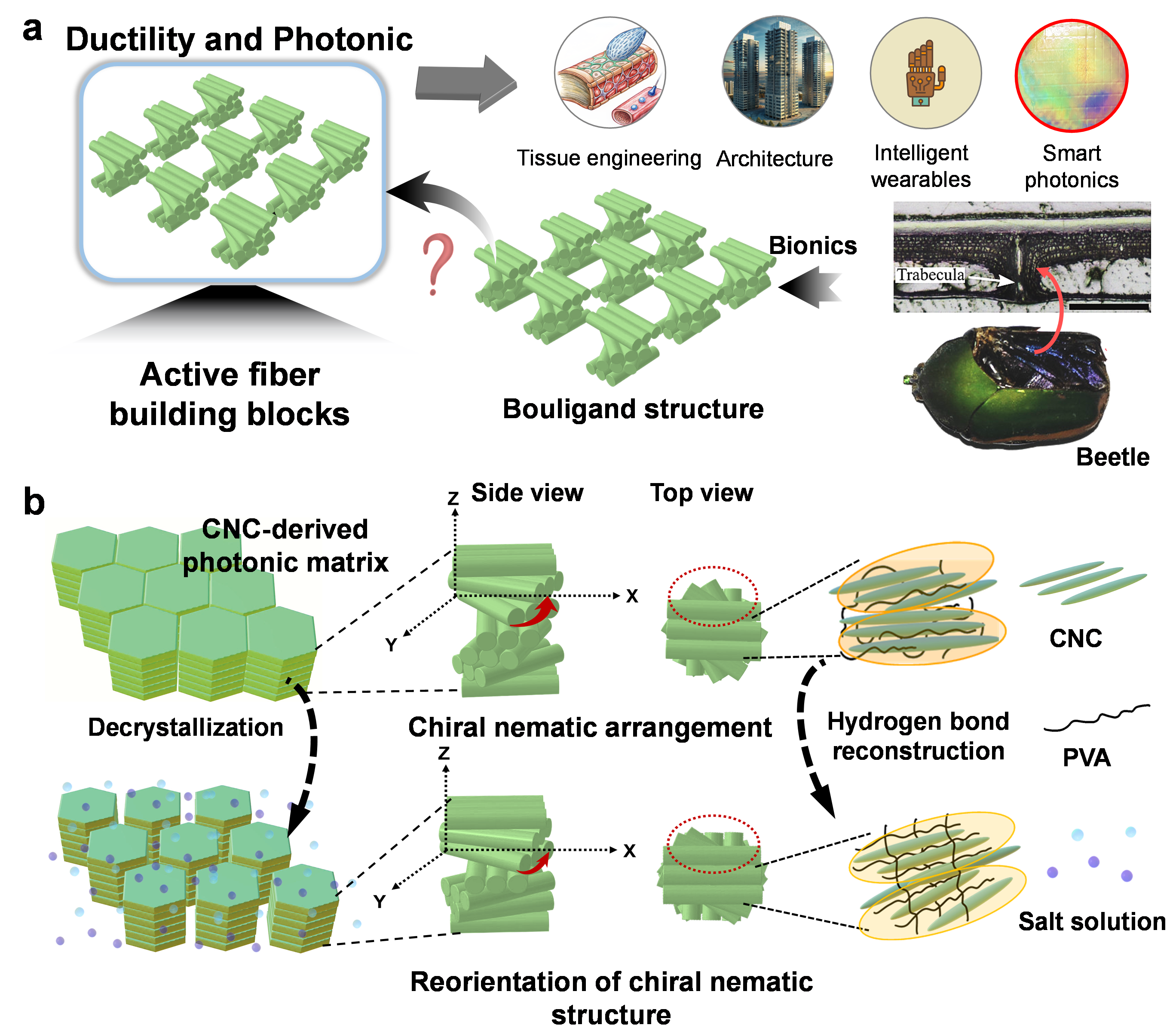Qiongya Li, Chenchen He, Yi Qian, Hao Wang, Cunli Wang, Xiuxiu Wang, Fusheng Zhang,* and Guangyan Qing*
Materials Today, 2025, 10.1016/j.mattod.2025.01.008
https://doi.org/10.1016/j.mattod.2025.01.008
Natural Bouligand structures, known for their interlayer coupling and stress transfer mechanisms, have inspired the development of high-performance materials such as impact-resistant bioplastics, ceramic armor, and biomimetic alloy composites. Despite significant advancements in engineering plasticity through molecular-level design and multi-scale structural optimization, existing materials are predominantly composed of single-scale brittle units. The lack of hierarchical active interfaces and autonomous response capabilities has limited their ductility and functionality. To overcome these limitations, researchers aim to develop novel Bouligand-structured materials with multi-level active interfaces, dynamic responsiveness, and enhanced toughness. By balancing micro-movements with structural stability, they seek to resolve the long-standing trade-off between brittleness and toughness, addressing key technical challenges in the practical application of biomimetic materials. Recently, the research team led by Professor Qing Guangyan from the Dalian Institute of Chemical Physics (DICP) of the Chinese Academy of Sciences (CAS) has designed and fabricated a high-strength, reconfigurable, and mechanochromic cellulose photonic hydrogel. Their finding was published in Materials Today.

By leveraging the self-assembly of cellulose nanocrystals (CNCs), the team introduced an innovative strategy to construct Bouligand structures with promising applications. This approach achieves precise control over network matrix alignment through nanofiber sliding and hydrogen bond reconstruction, driven by water-activated hydrogen bonding interactions. The resulting photonic hydrogels exhibit exceptional mechanical properties, with toughness increasing fivefold to 155.5 MJ/m³ and stretchability exceeding 950% compared to the original hydrogel.
Furthermore, these hydrogels demonstrate dynamic color-changing abilities, switching reversibly between red and blue while maintaining stable electromechanical sensitivity under repeated stretching. The photonic imaging interface remains highly durable and can be reused multiple times, requiring only a five-minute water soak to restore functionality. "This work paves a new path for the practical application of CNCs, with potential uses in sustainable bioplastics, flexible electronic substrates, and smart photonic devices," said Professor Qing.
【Abstract】Biomimetic Bouligand structures hold transformative potential for developing high-performance nanocomposites in cutting-edge fields, ranging from bioplastics and architecture to aerospace. Despite the remarkable precision of the self-assembly strategy, they often function as inert substrates lacking active interfibrous and their biomimetic derivatives exhibit low ductility and insufficient toughness. Here we present robust and photonic Bouligand structural hydrogels with dynamic mechanochromic properties, achieved by reorienting the chiral nematic structures through crystallization domain reduction and chain reconstruction. These hydrogels demonstrate exceptional mechanical performance (ultrahigh stretchability of over 950 % and toughness up to 155.5 MJ∙m−3). Furthermore, the photonic hydrogel demonstrates a reversible color change with a wavelength shift of 427 nm, alongside progressive electrical sensing that remains responsive across a broad range of mechanical stretching. This innovative approach and resulting photonic Bouligand hydrogel offer significant potential for smart photonics and pave the way for practical applications of these sustainable photonic cellulose materials.